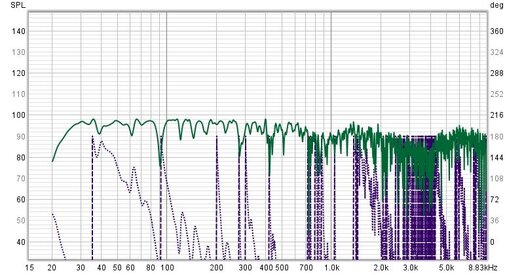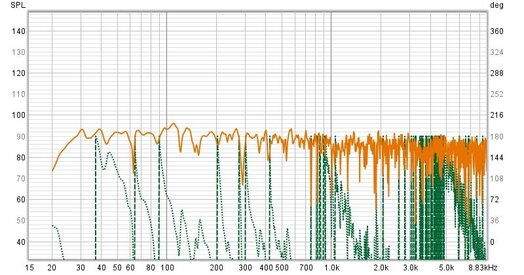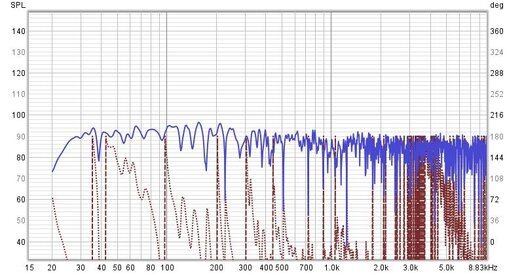Hi jtaiden. Could you clarify some details please. Your mic moving area is 12" deep right?
This data from 2013 did not include any front/rear mic motion - just up/down and right/left. I just was commenting that currently I do include some front/rear motion as well and it hasn't made a significant difference in my room.
The LP for the posted set of measurements was almost 4 m in from of the speaker being measured. The LP is at the center of the 20"H X 36"W window that contained the 7 sweeps and the 6 MMM measurements. This is a little different from my current MMM process that also includes some mic motion front/rear along with the up/down and right/left that was use here.
So all of your moves are in the B&K no fly zone? When you did the sweep measurements were you sitting behind the mic?
Yes, In 95% of the cases I have start with the mic on a stand at the LP. I start the RTA forever measurement at the PC a few feet away. I move to the mic and remove it from the stand and sweep through the window range. When finished, I replace the mic on the stand and move to the PC to stop the RTA. The process is very forgiving to using other procedures for the mechanics of the process.
All dual speaker measurements which are not precisely central suffer from HF anomalies. This is due to comb filtering caused by the different distances (time of flight) to the tweeters.
Yes, this is correct and is particularly bad for a single measurement of a stereo pair as you posted.
This is a false measurement of your HF response...
We are measuring one speaker at a time and getting an accurate representation of the taking many simple sweeps in that same area and then SPL averaging them. To discount using this method is discounting using sweep averages.
It is true that, if we instead vector averaged the same sweep measurements, we would get a very distorted SPL due to phase cancelations. That is why we use the simple SPL average.
Also...... the windscreens we use professionally are substantial and tested. Unless one moves very slowly there is bound to be VLF disturbance of the diaphragm. And indeed structure borne muscle and bone creaking if you are of my age!
I have tried moving the mic very slowly and relatively fast with no difference. I therefore just move it a comfortable moderate speed. The impact of any resonable spurious noise as in disconnecting or replacing the mic from the stand would normally be washed out in the large number of averages obtained. The body to mic positioning is always changing as both are moving during the process so again, I think this washes out.
If you tried this at a typical LP room LP measurement position what were your results - any data? It may not connect well with your normal sound activities. Your concerns are all warranted, I am only suggesting that unless you have more direct evidence that there is a significant problem using this method you may be dismissing it too strongly.


















